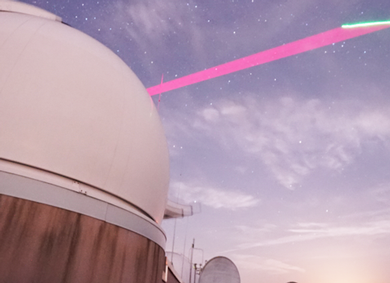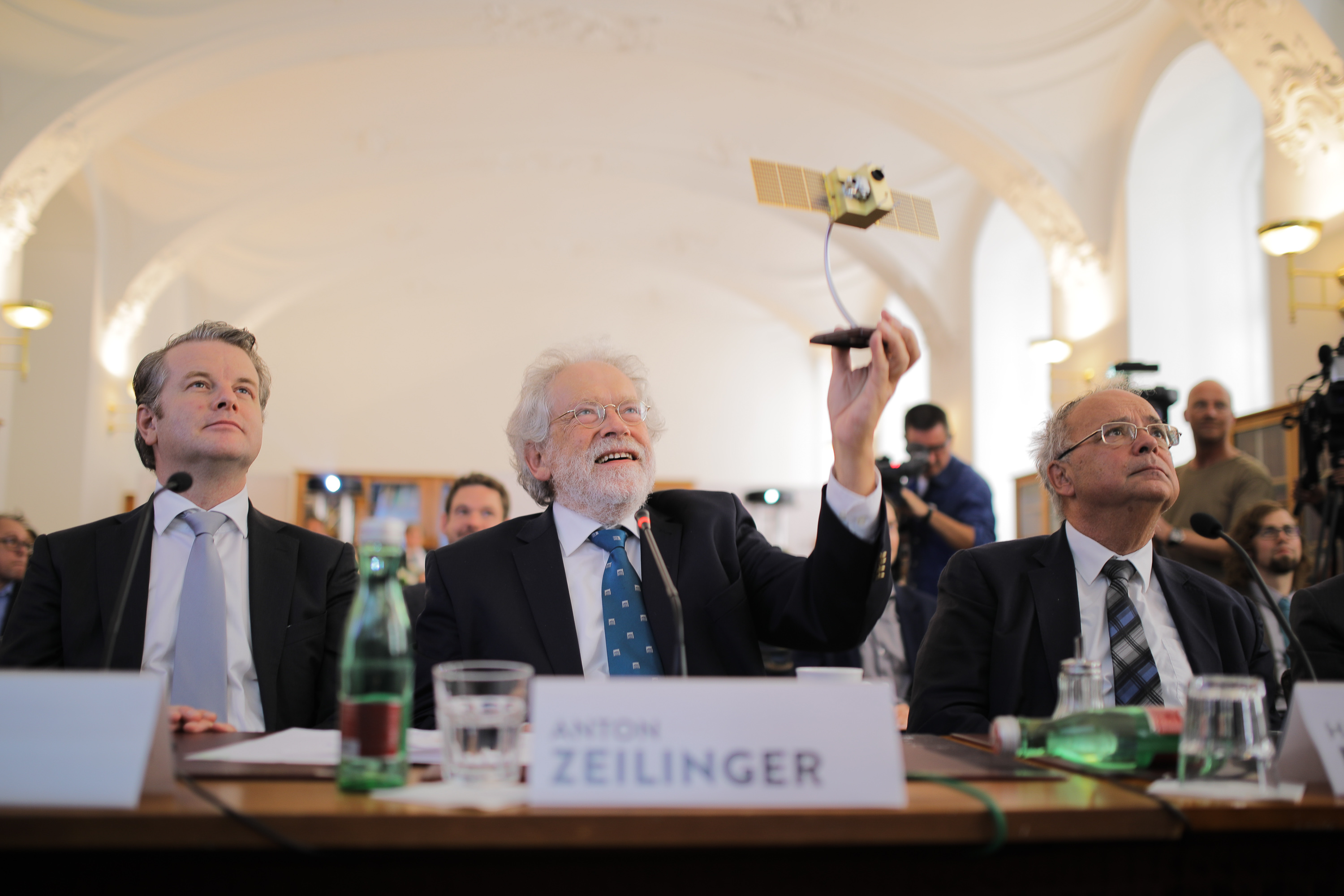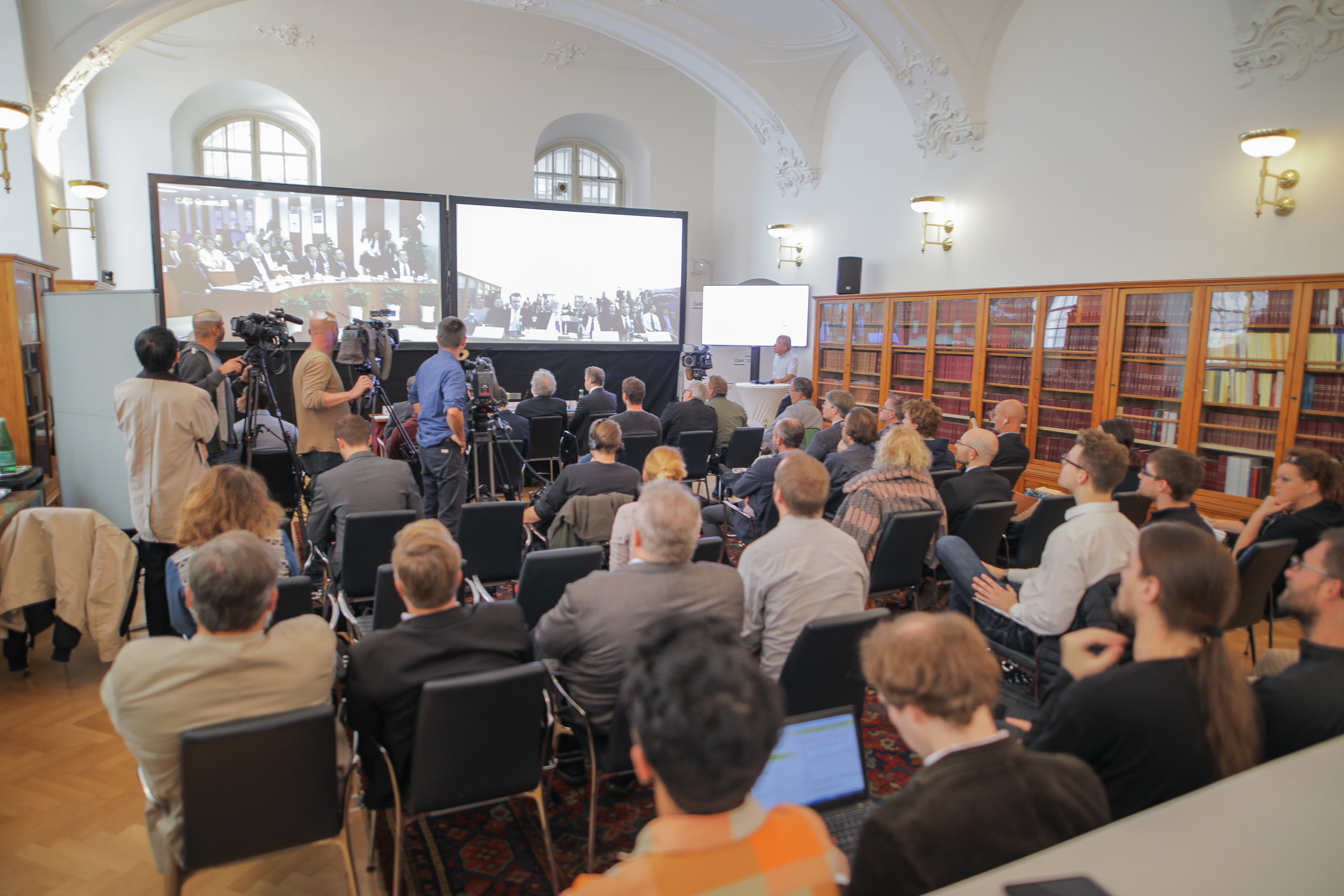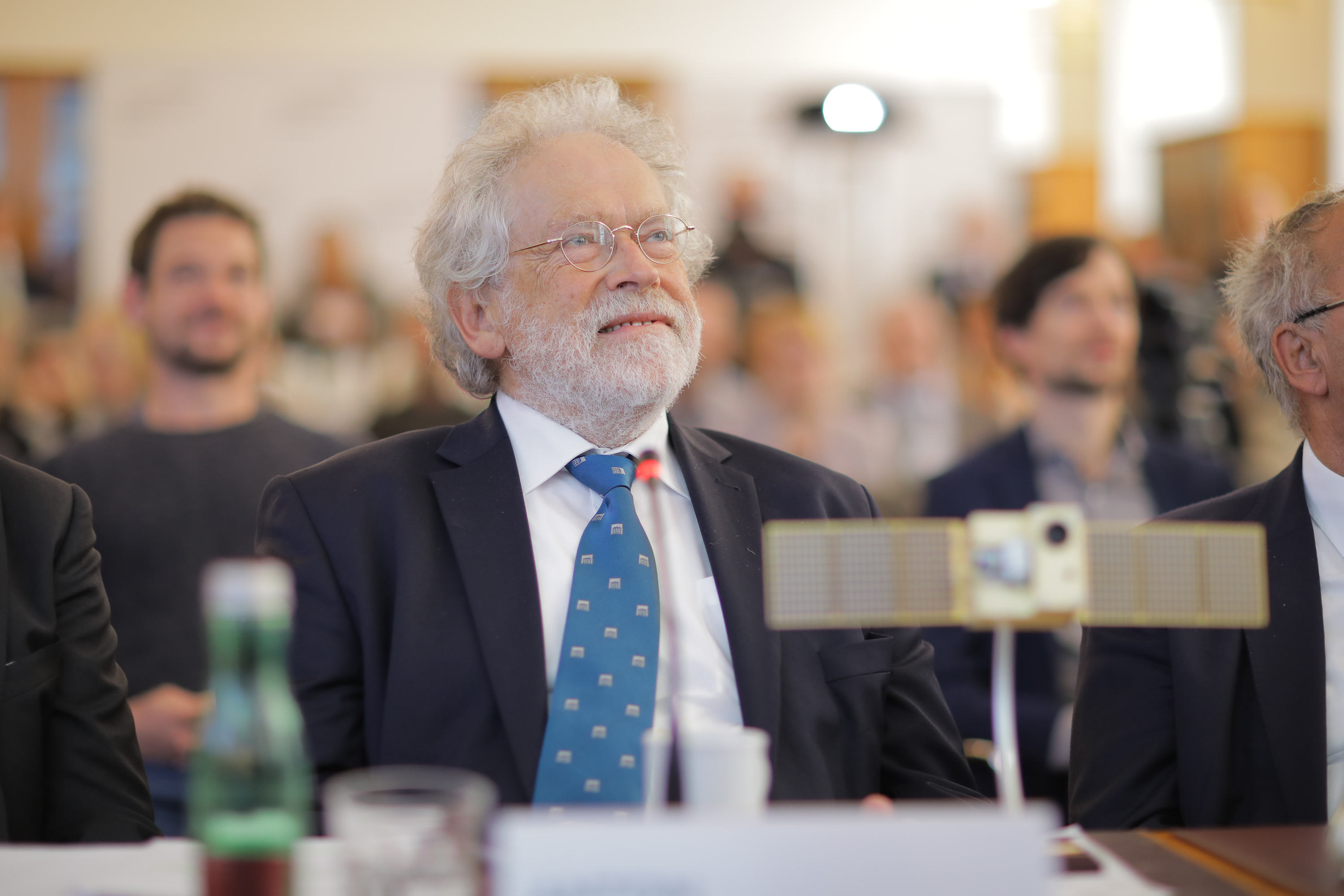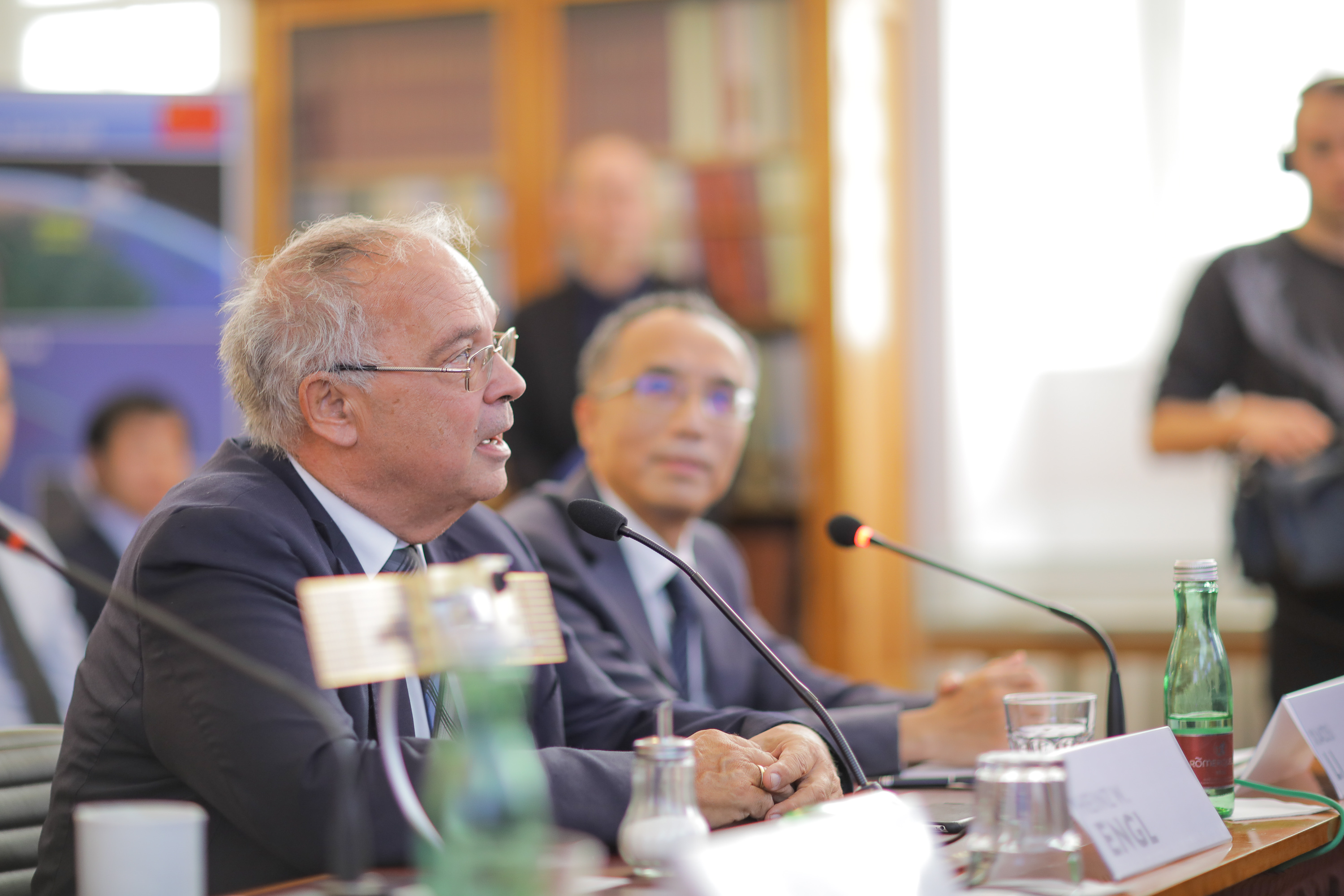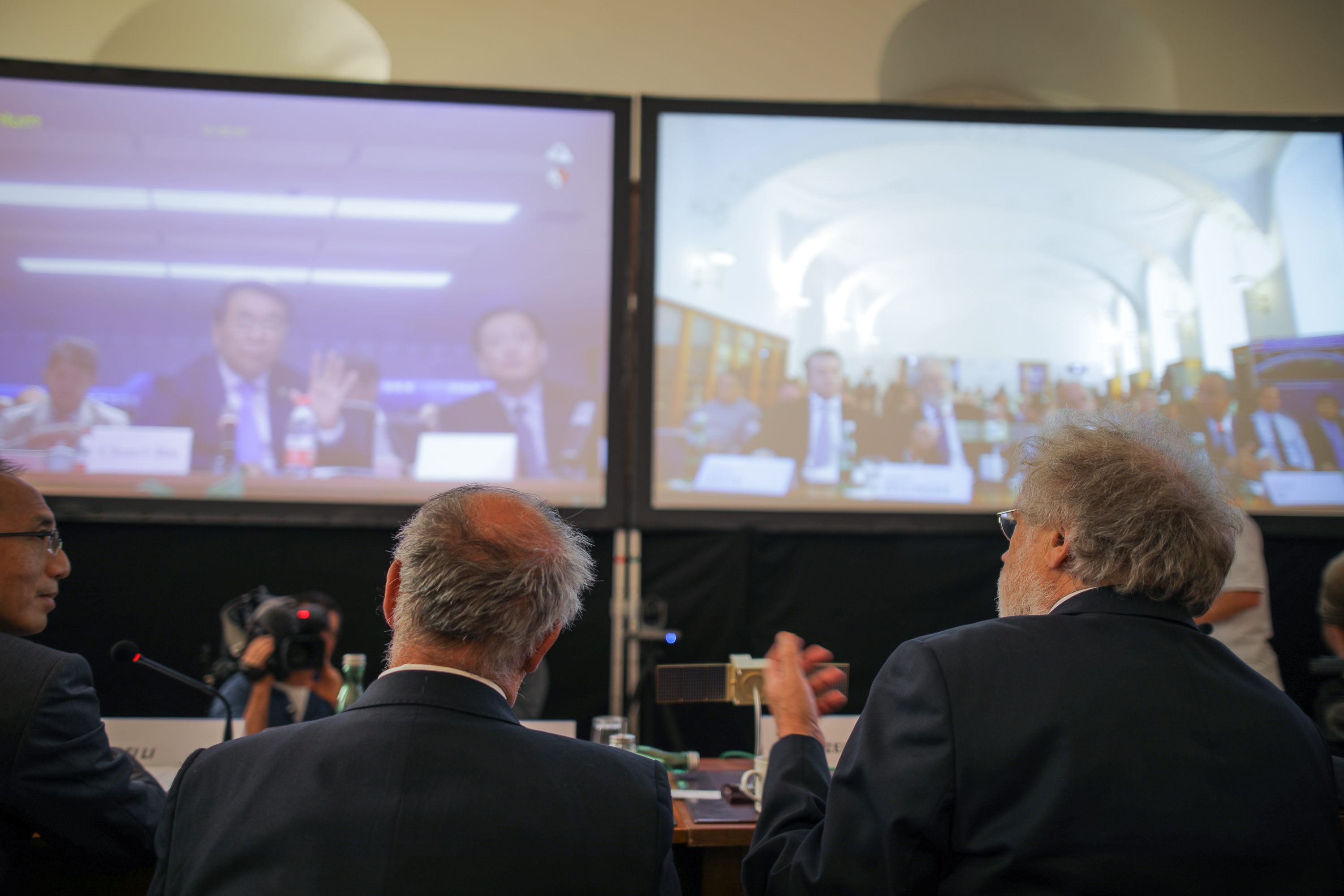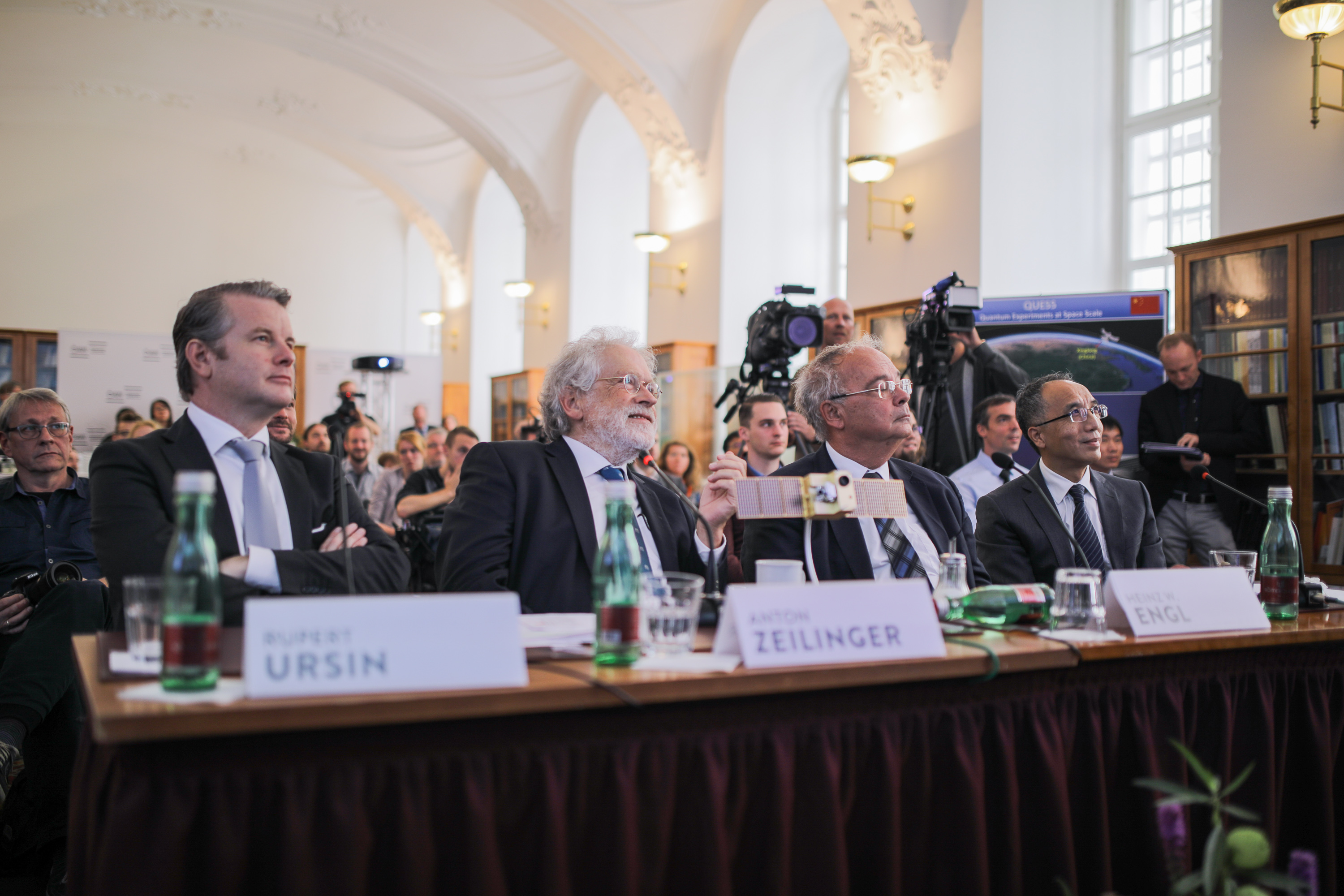From quantum cryptography to the quantum internet – fundamental research into the world of the quantum promises several new tech opportunities in the future. What is already possible today has just become evident in a world premiere: Chunli Bai, the President of the Chinese Academy of Sciences, and his colleague Anton Zeilinger, the President of the Austrian Academy of Sciences, as well as Heinz W. Engl, the Rector of the University of Vienna, talked face to face in a secure videoconference call – which was encrypted with the help of quantum technology. This first ever quantum cryptographically secured video call on 29 September 2017 between Vienna and Beijing spanned two continents.
Quantum cryptography made this call, which was conducted in a live-experiment in the presence of media representatives and scientists at the Austrian Academy of Sciences and in the Chinese capital Beijing, at least a million times safer than it would have been using conventional methods of encryption.
First field test for orbital quantum encryption
What has made the world's first inter-continental quantum call possible is an international collaboration of researchers at the Chinese Academy of Sciences, the Austrian Academy of Sciences and the University of Vienna in the teams of quantum physicists Jian-Wei Pan and Anton Zeilinger. The research project, which goes by the name of QUESS (Quantum Experiments at Space Scale) and which was initiated by Zeilinger and his former PhD student Pan in 2013, uses a Chinese satellite which was launched into space last year for quantum physics experiments between Earth and space.
This is a very important step towards a world-wide and secure quantum internet.
With the successful encryption of this video conference, the participating Austrian and Chinese scientists have demonstrated the extraordinary practical potential of this orbital quantum technology for the future development of global communication. The decisive advantage of quantum technologies as compared to conventional communication technologies is that hacking them is impossible due to the distinct laws of quantum physics.
“The exchange of quantum encrypted information over inter-continental distances confirms the potential of quantum communication technologies as opened up by fundamental research”, says Anton Zeilinger. He is convinced: "This is a very important step towards a world-wide and secure quantum internet."
“Insight must precede application”, Rector Heinz W. Engl quotes Max Planck, the founding father of quantum physics. “A telephone call illustrates today the innovative potential of fundamental research – in this case the innovative potential of the long-standing cooperation in quantum physics between the University of Vienna and the Austrian Academy of Sciences.”
Quantum encryption between space, Vienna and Beijing
To produce the quantum key used for the video call between the two science institutions, researchers at the Austrian Academy of Sciences and the Chinese Academy of Sciences for the first time worked with quantum satellite Micius, which was dispatched in the summer of 2016 from the Chinese space launch center Jiuquan. Named after a Chinese philosopher of antiquity, Micius circles Earth in an altitude of about 500 kilometers. From orbit it sends out light particles, so-called photons, to ground stations in China and Europe, including the Satellite Laser Ranging Station used by the Austrian Academy of Sciences’ Institute for Space Research in Graz. Thanks to the orbital relay station, it is possible to circumvent the technical limitations in quantum communication on the surface of the earth which are caused by the earth’s curvature and the signal loss in long fiber optic cables.
In the run-up to the video call, Micius first generated light particles with a random oscillation direction, the so-called polarization. The single photons with their various polarizations were then transmitted as a sequence of ones and zeros to the ground station near the Austrian city of Graz. There, the polarization states were measured and compared randomly with the sequence sent by the satellite.
If somebody attempts to intercept the photons, the quantum state of the photons will be changed by this measurement attempt, immediately exposing the hackers.
Unhackable quantum key
The clou: "If somebody attempts to intercept the photons exchanged between the satellite and the ground station and to measure their polarization, the quantum state of the photons will be changed by this measurement attempt, immediately exposing the hackers", explains Johannes Handsteiner from the Austrian Academy of Sciences’ Vienna Institute for Quantum Optics and Quantum Information, on the roof of which the "Hedy Lamarr Quantum Communication Telescope" is located, which was used for preparations of the experiment. Any deviation of data measured at transmitter and receiver therefore enables immediate discovery of any eavesdropping attack. If the measured data are consistent, then sender and receiver have a first quantum key.
After the key, which was generated between Graz and Micius, was stored with the satellite the Chinese ground station performed the same procedure, so that Micius ultimately had two quantum keys. These were then, in orbit, combined and the result of the combination was transferred back to the ground stations in Austria and China. Using each their "separate" keys on the one hand and the combined key on the other hand, both ground stations now were able to generate a common code for the unambiguous encryption and decryption of information – which was then used for the secure encryption of the world’s first quantum call between Vienna and Beijing.
